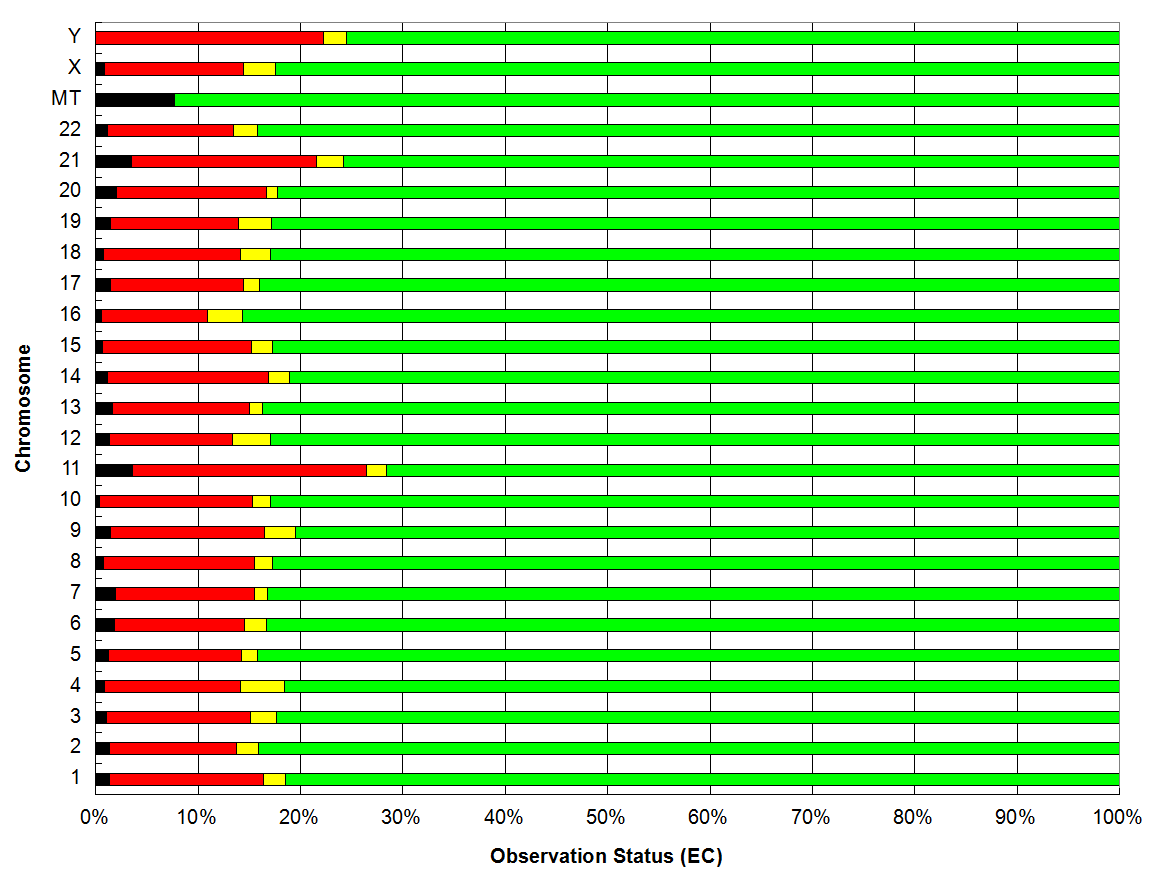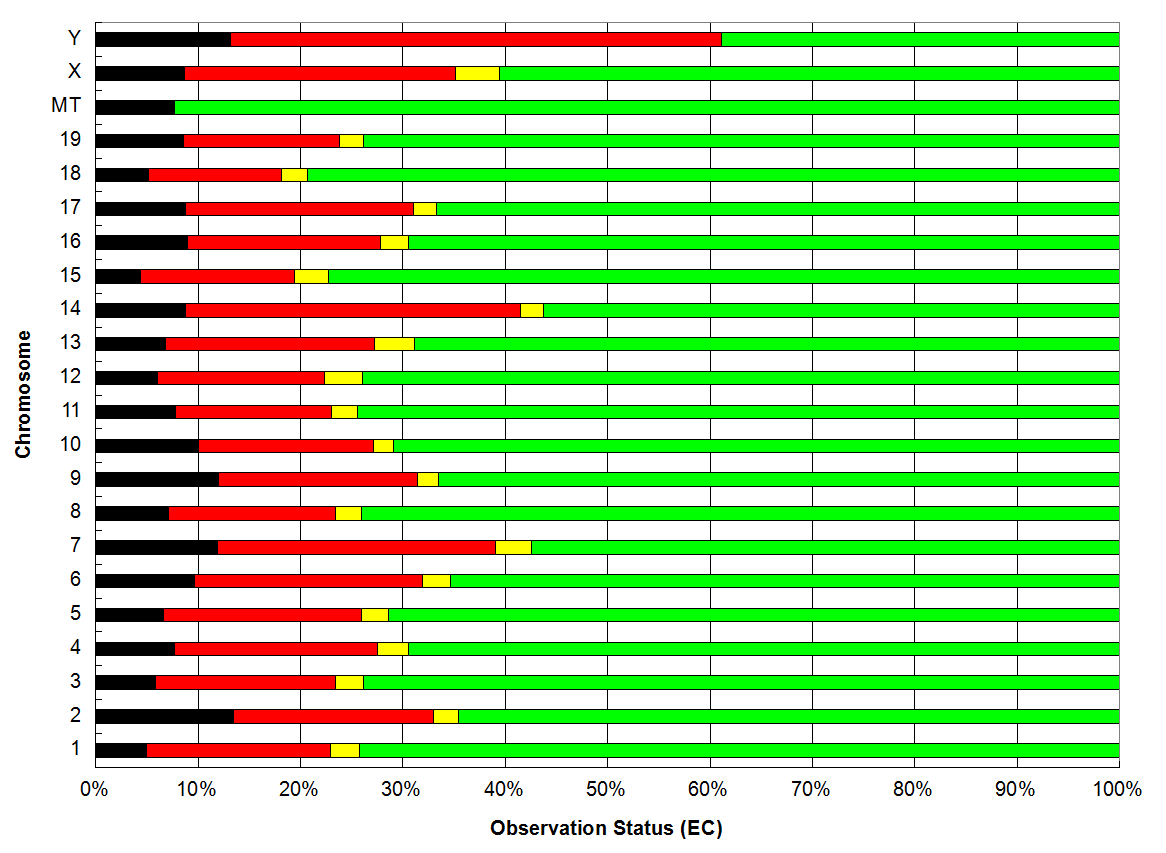
|
|
|
News Archive
Release of v. 20 of both the Human & Mouse Proteome Guides (2015/09/30)
 We would like to announce the release of the 20th version of the Human and Mouse Proteome Guides.
These spreadsheets summarize the information about the identification of all genes and their associated splice variants currently
available in GPMDB for these two species.
We would like to announce the release of the 20th version of the Human and Mouse Proteome Guides.
These spreadsheets summarize the information about the identification of all genes and their associated splice variants currently
available in GPMDB for these two species.
FTP site service interuption (2015/09/17)
 The power system in the building that houses the GPM FTP site (ftp.thegpm.org)
is undergoing some needed equipment upgrades which are going to be extended to Sept. 18, 2015. The
FTP site will be unavailable from 2:00 – 13:00 UTC during this maintenance process. Hopefully
the maintenance work will be complete and no further interuptions will be necessary.
The power system in the building that houses the GPM FTP site (ftp.thegpm.org)
is undergoing some needed equipment upgrades which are going to be extended to Sept. 18, 2015. The
FTP site will be unavailable from 2:00 – 13:00 UTC during this maintenance process. Hopefully
the maintenance work will be complete and no further interuptions will be necessary.
FTP site service interuption (2015/09/11)
 The power system in the building that houses the GPM FTP site (ftp.thegpm.org)
is undergoing some needed equipment upgrades during the period Sept. 14 to Sept 17, 2015. The
FTP site will be unavailable for significant periods of time during this maintenance process. There will
be an announcement on this page once the maintenance is complete.
The power system in the building that houses the GPM FTP site (ftp.thegpm.org)
is undergoing some needed equipment upgrades during the period Sept. 14 to Sept 17, 2015. The
FTP site will be unavailable for significant periods of time during this maintenance process. There will
be an announcement on this page once the maintenance is complete.
Proteomics basics 101 #6, by Ron Beavis (2015/05/20)
Monte Carlo methods for evaluating LC/MS/MS data sets: II. Peptides & derviatives.  In the previous blog, the use of Monte Carlo simulations to understand the relationship between
the number of spectra taken and the number of unique proteins identified was introduced. In this entry, the
same type of analysis will be applied to the peptides, once again trying to give a clearer idea of how the number
of spectra taken is related to the number of unique peptides identified.
In the previous blog, the use of Monte Carlo simulations to understand the relationship between
the number of spectra taken and the number of unique proteins identified was introduced. In this entry, the
same type of analysis will be applied to the peptides, once again trying to give a clearer idea of how the number
of spectra taken is related to the number of unique peptides identified.
Monte Carlo simulations for this type of analysis are performed in the same way as they were for proteins.
more ...
Proteomics basics 101 #5, by Ron Beavis (2015/05/05)
Monte Carlo methods for evaluating LC/MS/MS data sets: I. Protein ids.  A common problem in practical proteomics data analysis is the characterization of data from a particular experiment
using some set of parameters that indicate how well the experiment was performed. For example, the number of unique
proteins identified, the number of unique peptides identified and the total number of spectra assigned to peptide
sequences are frequently reported. These parameters can be used to compare results within a set of similar experiments,
but they are limited in their utility when comparing different experimental protocols,
more ...
A common problem in practical proteomics data analysis is the characterization of data from a particular experiment
using some set of parameters that indicate how well the experiment was performed. For example, the number of unique
proteins identified, the number of unique peptides identified and the total number of spectra assigned to peptide
sequences are frequently reported. These parameters can be used to compare results within a set of similar experiments,
but they are limited in their utility when comparing different experimental protocols,
more ...
Guides to the Human & Mouse Proteomes v. 18 released (2015/4/20)
 The Guide to the Mouse Proteome (v. 18) and the Guide to the Human Proteome (v. 18) based on ENSEMBL v. 76 that uses the
GRCm38 and GRCh38 genome assemblies (respectively) as the scaffolds for the associated genes has been released:
human and mouse.
The new versions include protein-coding genes associated with haplotypes, patches and DNA that have not be assigned to a reference chromosome
(in the "CHROT" tab of the spreadsheets). Evidence codes for this release used the current version of the
NBS algorithm.
The Guide to the Mouse Proteome (v. 18) and the Guide to the Human Proteome (v. 18) based on ENSEMBL v. 76 that uses the
GRCm38 and GRCh38 genome assemblies (respectively) as the scaffolds for the associated genes has been released:
human and mouse.
The new versions include protein-coding genes associated with haplotypes, patches and DNA that have not be assigned to a reference chromosome
(in the "CHROT" tab of the spreadsheets). Evidence codes for this release used the current version of the
NBS algorithm.
X! Tandem PILEDRIVER released (2015/4/17)
 The latest version of X! Tandem (PILEDRIVER) has been released. This version includes updates
to the mzML input types allowed: the new NumPress numerical compression data types described
in Teleman, 2014.
A new output file type, mzIdent, has been added, although this implementation should be considered
a beta test until the mzIdent standard has been finalized to include more details about
the assembly of proteins from identified peptides.
The latest version of X! Tandem (PILEDRIVER) has been released. This version includes updates
to the mzML input types allowed: the new NumPress numerical compression data types described
in Teleman, 2014.
A new output file type, mzIdent, has been added, although this implementation should be considered
a beta test until the mzIdent standard has been finalized to include more details about
the assembly of proteins from identified peptides.
Guide to the Mouse Proteome v. 17 released (2015/1/27)
 The first version of the Guide to the Mouse Proteome (v. 17) based on ENSEMBL v. 76 that uses the
GRCm38 genome assembly as the scaffold for the associated genes has been released here.
The new version includes for the first time protein-coding genes associated with haplotypes, patches and DNA that has not be assigned to a chromosome
(in the "OTHER" tab of the spreadsheets). Evidence codes for this release used the current version of the
NBS algorithm.
The first version of the Guide to the Mouse Proteome (v. 17) based on ENSEMBL v. 76 that uses the
GRCm38 genome assembly as the scaffold for the associated genes has been released here.
The new version includes for the first time protein-coding genes associated with haplotypes, patches and DNA that has not be assigned to a chromosome
(in the "OTHER" tab of the spreadsheets). Evidence codes for this release used the current version of the
NBS algorithm.
Guide to the Human Proteome v. 17 released (2015/1/26)
 The first version of the Guide to the Human Proteome (v. 17) based on ENSEMBL v. 76 that uses the
GRCh38 genome assembly as the scaffold for the associated genes has been released here.
The new version includes for the first time protein-coding genes associated with haplotypes, patches and DNA that has not be assigned to a chromosome
(in the "OTHER" tab of the spreadsheets). Evidence codes for this release used the current version of the
NBS algorithm.
The first version of the Guide to the Human Proteome (v. 17) based on ENSEMBL v. 76 that uses the
GRCh38 genome assembly as the scaffold for the associated genes has been released here.
The new version includes for the first time protein-coding genes associated with haplotypes, patches and DNA that has not be assigned to a chromosome
(in the "OTHER" tab of the spreadsheets). Evidence codes for this release used the current version of the
NBS algorithm.
The following histogram is a stacked plot that provides a chromosome-by-chromosome breakdown of the identification
status of the genes in the human proteome.

The following histogram is a stacked plot that provides a chromosome-by-chromosome breakdown of the identification
status of the genes in the mouse proteome.

Copyright © 2015, The Global Proteome Machine Organization
|